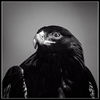First pics with new lens-- Need advice if possible
Jan 29, 2015 10:25:18 #
In my humble opinion, most camera manuals are only useful as pointers to features. The manual, more or less, assumes you know what the feature is, and why and when you want to use it, so it just tells you how to access it. It's a little better than that, but not much. I would suggest getting a book tailored to your specific camera. There are are a few out there. Here is just one:
http://www.amazon.com/David-Buschs-Digital-Photography-Guides/dp/1285839161/ref=sr_1_2?s=books&ie=UTF8&qid=1422544413&sr=1-2&keywords=canon+rebel+sl1&pebp=1422544463484&peasin=1285839161
Now, I'm not familiar with this particular author, but he seems to be well known for his camera-specific books. I bought a book tailored to my camera (the author was named Klosterman), and it really made sense of the camera.
In the mean time, your manual ought to have an index to features. Look for the section on AF, which is the section auto focus features.
http://www.amazon.com/David-Buschs-Digital-Photography-Guides/dp/1285839161/ref=sr_1_2?s=books&ie=UTF8&qid=1422544413&sr=1-2&keywords=canon+rebel+sl1&pebp=1422544463484&peasin=1285839161
Now, I'm not familiar with this particular author, but he seems to be well known for his camera-specific books. I bought a book tailored to my camera (the author was named Klosterman), and it really made sense of the camera.
In the mean time, your manual ought to have an index to features. Look for the section on AF, which is the section auto focus features.
Jan 29, 2015 10:32:43 #
"Manual mode" simply means that you control both the aperture and the shutter speed. It has nothing to do with focusing. You can be in manual mode, and still use auto focus.
Using manual focusing is completely independent of the mode of the camera. Your lens has a switch that goes from MF (manual focus) to AF (auto focus). If you switch it to MF, the camera will know you are focusing manually, and the autofocus function will be turned off. I wouldn't recommend this, just yet. Get the hang of the various types of auto focus, first. Once you learn that, you will love it.
Using manual focusing is completely independent of the mode of the camera. Your lens has a switch that goes from MF (manual focus) to AF (auto focus). If you switch it to MF, the camera will know you are focusing manually, and the autofocus function will be turned off. I wouldn't recommend this, just yet. Get the hang of the various types of auto focus, first. Once you learn that, you will love it.
Jan 29, 2015 10:33:18 #
Cdouthitt wrote:
When I used to shoot images of this type, I'd have my camera on a tripod with a cable release hooked up, and make sure your speed is set fast enough (depending on your focal length). Approximate Rule of thumb for speed is 1/(focal length). Be sure to have IS turned off (if it has it) and do some tests with mirror lockup/delay. Single point small or diamond pattern for focusing.
Practice, practice, practice.
Practice, practice, practice.
Thank you! At this point I don't yet have a tripod... (baby steps) as I have spent so much on the camera and more so on the lens... and a mini trip coming up... at a beach and trying so hard to at least be able to get some decent shots... I can't seem to find the focal and where I change it if in fact its a setting ...am looking at my manual now and trying to figure this part out
Jan 29, 2015 13:32:20 #
Faster shutter speed is needed. Make sure you're using your lenses Image Stabilization feature. Here's an explanation of the exposure triangle. Once you understand this you'll be taking better photographs.
http://www.digitalcameraworld.com/2013/10/16/exposure-triangle-cheat-sheet-understanding-aperture-shutter-speed-and-iso/
http://www.digitalcameraworld.com/2013/10/16/exposure-triangle-cheat-sheet-understanding-aperture-shutter-speed-and-iso/
Jan 29, 2015 14:58:53 #
Nancy, in addition to all the good advice here you might find the short videos on Youtube very helpful and enjoyable. Mike Browne has loads on each little topic and no doubt there are many others who demonstrate on your specific camera. It is, I think, easier to understand something that is demonstrated visually. Good luck and enjoy this great hobby.
Jan 29, 2015 15:04:24 #
3Nancy3 wrote:
Thank you! At this point I don't yet have a tripod...
What's a little more...come one...you know you want one...
http://www.mefoto.com/products/roadtrip.aspx
Jan 29, 2015 15:08:20 #
Hi,
Do I read your response correctly? - you have a 70 - 300 L lens mounted on the camera? I agree with most of the others who suggested you were not focused on the bird with a single focus point. You may also want to make sure the IS (image stabilization) is switched to on. That's a pretty heavy lens - a monopod or tripod my help - not necessary, but hand holding may be a bit challenging. Try shooting something else, the same distance, not necessarily a bird, using some of the suggestions and post results. Good luck and most important, have fun!!
Mark
Do I read your response correctly? - you have a 70 - 300 L lens mounted on the camera? I agree with most of the others who suggested you were not focused on the bird with a single focus point. You may also want to make sure the IS (image stabilization) is switched to on. That's a pretty heavy lens - a monopod or tripod my help - not necessary, but hand holding may be a bit challenging. Try shooting something else, the same distance, not necessarily a bird, using some of the suggestions and post results. Good luck and most important, have fun!!
Mark
Jan 29, 2015 15:18:44 #
To see camera settings, right click on the image and select properties. In general your shutter setting (speed) should be no less that 1/focal length of the lens. So since you had the lens at 270 mm, your shutter speed should have been approximately 1/300.
Jan 29, 2015 15:27:07 #
To see camera settings, right click on the image and select properties. In general your shutter setting (speed) should be no less that 1/focal length of the lens. So since you had the lens at 270 mm, your shutter speed should have been approximately 1/300.
Jan 29, 2015 15:55:23 #
Hi Nancy,
You should be able to find a digital (kindle, ..) book on your camera - not too expensive and transportable, that is for reading and learning - not the manual - unfortunately manuals are basically an itemized indices and were not intended as a learning tool, especially for NEWBIES. I have one for my Canon 5d M iii and my Canon 7d m ii by Doug Klostermann. Both are excellent. Try searching on Amazon or googleing. I'm fairly certain you'll find some good offers. youtube is also an excellent resource. (picture is worth 1000 words, ...LOL)
Mark
You should be able to find a digital (kindle, ..) book on your camera - not too expensive and transportable, that is for reading and learning - not the manual - unfortunately manuals are basically an itemized indices and were not intended as a learning tool, especially for NEWBIES. I have one for my Canon 5d M iii and my Canon 7d m ii by Doug Klostermann. Both are excellent. Try searching on Amazon or googleing. I'm fairly certain you'll find some good offers. youtube is also an excellent resource. (picture is worth 1000 words, ...LOL)
Mark
Jan 29, 2015 20:32:34 #
gemlenz wrote:
Faster shutter speed is needed. Make sure you're using your lenses Image Stabilization feature. Here's an explanation of the exposure triangle. Once you understand this you'll be taking better photographs.
http://www.digitalcameraworld.com/2013/10/16/exposure-triangle-cheat-sheet-understanding-aperture-shutter-speed-and-iso/
http://www.digitalcameraworld.com/2013/10/16/exposure-triangle-cheat-sheet-understanding-aperture-shutter-speed-and-iso/
WOW!! Love this site and especially this page... am going to get this thing yet.... I think I may have overplayed with my settings and am a tad mixed up now but am sure trying!!! Thanks so much for this link!!
Jan 29, 2015 20:37:37 #
markngolf wrote:
Hi Nancy, br br You should be able to find a dig... (show quote)
This is on my TO GET list !! I didn't know I could get a book like this I will order today or tomorrow... Wish I had a kindle but since I am not a avid reader I thought it wouldnt be that handy I do have an iPad... I wonder if that would work or am I expecting miracles? lol Thanks so much! The help given on this site is irreplacable! They don't delete anything on us here do they? like our messages?
Jan 29, 2015 21:26:07 #
O.k.. Everyone here has given you excellent advice. Now to put it to practical use. First thing; I have an almost identical setup with my bird feeder. It is about 4 ft. away from my dining room window and I set about 4-5 ft. inside of that at a table - no tripod. Unless you have really shaky hands, you don't need one. A tripod would be a smart thing to use regardless. I have yet to be accused of being smart. 2nd: you have an excellent camera and an excellent lens. Make sure that the I.S. is turned on as mentioned before. For my exposure, I use the spot metering most of the time. Try that. For focusing, I always use single point. Try that.
Now then, there are a few schools of thought on this. You should either use M mode or AV mode. Stay away from any type of shutter priority for now (TV). Let's go with M (manual) mode for now.
As you can see, I am trying to guide you to a practical start point. Let us now start with the really cool settings. In M mode. Set your ISO to 400 to start with. In your example, I would try to focus towards the back of his neck only because even with a single point focus, it will still read the feeder. The reason I chose ISO 400 for you is two fold: 1: you can use much faster shutter speeds and it allows for overcast light. 2: it helps with camera shake because you can use faster shutter speeds. That simple.
Set the aperture around F5.6 just for a start point. You can always change this later.
Now you are almost set. Look through your viewfinder. dial in the shutter speed to get those small bars as close to 0 as possible (I think that is how your camera works). You should have a good exposure at this point. Snap the picture. If by chance your shutter speed is around 1/100 sec. or so, you can lower the ISO to 200 for less noise and a sharper image. Remember what others have pointed out; your shutter speed should be somewhere around 300 or more with that particular lens when hand holding. If it is around 500 or slightly more, that is not a bad thing either. At this point, you can fool around and change the aperture to F6.3 - F7.1 or higher for a great depth of field. Just try not to have the shutter speed below 300 when doing this. If it does this at F7.1 for example, just bump the ISO back up to 400. Easy, right?
A good way to practice this if there are no birds around, simply stick a golf ball or something with texture about where you think the bird will be. I hope this was of some help.
If you wish to use AV mode instead, simply set your desired Aperture and ISO, and the camera will automatically select the shutter speed for you. Even easier yet, Huh? I hope this helps.
Now then, there are a few schools of thought on this. You should either use M mode or AV mode. Stay away from any type of shutter priority for now (TV). Let's go with M (manual) mode for now.
As you can see, I am trying to guide you to a practical start point. Let us now start with the really cool settings. In M mode. Set your ISO to 400 to start with. In your example, I would try to focus towards the back of his neck only because even with a single point focus, it will still read the feeder. The reason I chose ISO 400 for you is two fold: 1: you can use much faster shutter speeds and it allows for overcast light. 2: it helps with camera shake because you can use faster shutter speeds. That simple.
Set the aperture around F5.6 just for a start point. You can always change this later.
Now you are almost set. Look through your viewfinder. dial in the shutter speed to get those small bars as close to 0 as possible (I think that is how your camera works). You should have a good exposure at this point. Snap the picture. If by chance your shutter speed is around 1/100 sec. or so, you can lower the ISO to 200 for less noise and a sharper image. Remember what others have pointed out; your shutter speed should be somewhere around 300 or more with that particular lens when hand holding. If it is around 500 or slightly more, that is not a bad thing either. At this point, you can fool around and change the aperture to F6.3 - F7.1 or higher for a great depth of field. Just try not to have the shutter speed below 300 when doing this. If it does this at F7.1 for example, just bump the ISO back up to 400. Easy, right?
A good way to practice this if there are no birds around, simply stick a golf ball or something with texture about where you think the bird will be. I hope this was of some help.
If you wish to use AV mode instead, simply set your desired Aperture and ISO, and the camera will automatically select the shutter speed for you. Even easier yet, Huh? I hope this helps.
Jan 30, 2015 03:43:36 #
tainkc wrote:
O.k.. Everyone here has given you excellent advic... (show quote)
An excellent reply, very clearly explained and should certainly help Nancy get started on improving her photos.
Jan 30, 2015 04:07:13 #
Were these taken through glass Nancy?
Geoff
Geoff
3Nancy3 wrote:
New Lens and practicing..! Feedback would be appreciated.. good or bad,,,,,, I NEED to hear what I am doing wrong in order to improve, am a newbie...!! The last pic is my fave lol I like the smudged view of the other bird looking up... it was a Chickadee :?:
If you want to reply, then register here. Registration is free and your account is created instantly, so you can post right away.








